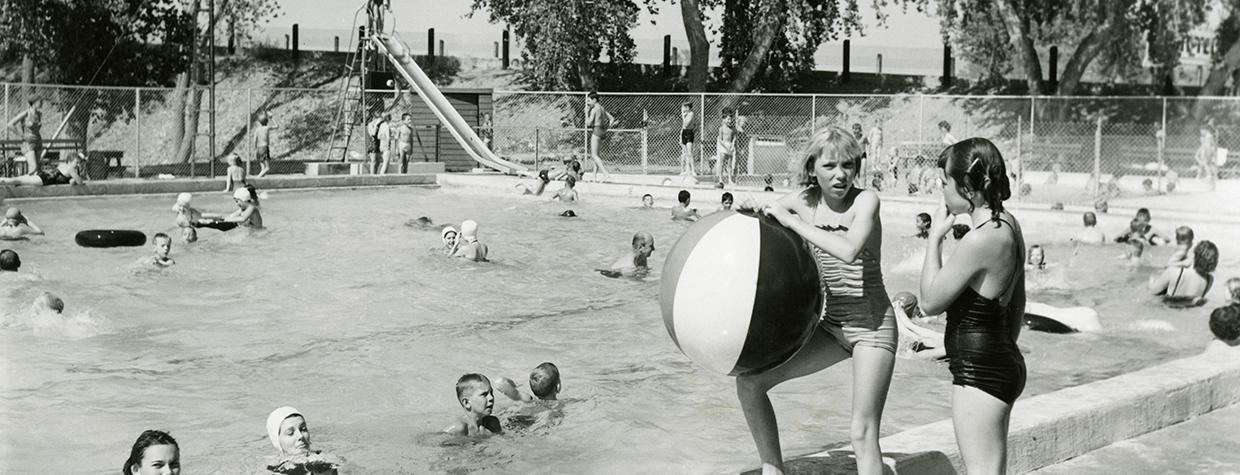Long before an artificial lake became a gleam in the eyes of civic leaders, one of Arizona’s first Olympic-size pools was the pride of Tempe. Wanting a wholesome attraction for young people, members of the Tempe Civic Club selected a swath of land at the corner of First Street (now Rio Salado Parkway) and Mill Avenue for the public pool; the parcel’s owner offered a rebate on the sale price in exchange for naming the new park Tempe Beach.
After the pool opened in 1923, R.J. Stroud, who had insisted it be built to Amateur Athletic Union standards, successfully campaigned to bring national swimming competitions to Tempe. The effort caused “the eyes of sports promoters all over the state to pop with amazement,” according to one reporter.
When Tempe hosted the women’s national championships a month after the 1932 Summer Olympics in Los Angeles, gold medalist Eleanor Holm broke her own world record in the 220-yard backstroke. But swimmers weren’t the only competitors in the pool’s early days. In 1927, the Phoenix Jaycees proposed a beauty pageant, with prizes for prettiest contestant, most perfectly proportioned swimmer and best bathing suit. The event drew 4,000 spectators to watch women from five of Arizona’s counties compete on a floodlit platform over the pool.
Generations of kids came for swimming lessons, which for a time concluded with a “goldfish swim,” with hundreds of goldfish released into the pool for swimmers to catch. “It was the place to be,” area resident Tirzah Heywood recalls. “Kids would go early for swimming lessons and stay the great majority of the day.”
Because it lacked a filtration system, the pool had to be drained three times a week. Former City Councilman Joe Spracale, who worked at the pool for 11 years, recalled that lifeguards would search the murky water with flashlights to look for swimmers, and routinely collect $30 to $40 in change from the bottom, before opening the drains.
In the mid-1960s, the pool was upgraded and the river-rock bathhouse replaced with a modern concrete structure. For a lot of people, it was never the same. And as backyard pools proliferated and newer venues opened, the pool’s popularity declined. It was drained for good in 1974.

